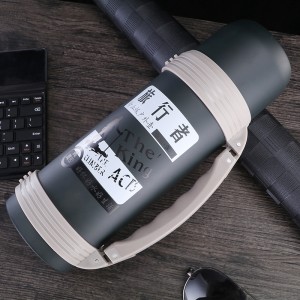Teflon technology and ceramic paint technology are both commonly used surface coating methods when manufacturing products such as kitchenware, tableware, and drinking glasses. This article will introduce in detail the production differences, advantages and disadvantages, and applicability of these two processes.
Teflon process:
Teflon coating, also known as non-stick coating, is a process that uses Teflon material (polytetrafluoroethylene, PTFE) to coat the surface of the product. It has the following characteristics:
advantage:
Non-sticky: Teflon coating has excellent non-stickiness, making food less likely to stick to the surface and easier to clean.
Corrosion resistance: Teflon has good corrosion resistance and can prevent acids, alkalis and other substances from corroding the surface of the product.
High temperature resistance: Teflon coating can withstand relatively high temperatures and is suitable for high-temperature environments such as cooking and baking.
Easy to Clean: Because they are non-sticky, Teflon-coated products are easy to clean, reducing the sticking of oil and food residue.
shortcoming:
Easy to scratch: Although the Teflon coating is durable, it may be scratched during use, affecting the appearance.
Limited color options: Teflon typically comes in white or a similarly light color, so color options are relatively limited.
Ceramic paint process:
Ceramic paint is a process in which ceramic powder is coated on the surface of the product and sintered at high temperature to form a hard ceramic coating.
advantage:
Wear resistance: The ceramic paint coating is hard and has good wear resistance, making the product surface more durable.
High temperature resistance: Ceramic paint can also withstand high temperature environments, making it suitable for situations such as cooking and baking.
Rich colors: Ceramic paint comes in a wide range of color options, allowing for more customized appearance designs.
shortcoming:
Easily Breakable: Although ceramic paint coatings are hard, they are still more susceptible to breakage than ceramic surfaces.
Heavier: Due to the thicker ceramic coating, the product may be heavier and not suitable for lightweight needs.
In summary, Teflon technology and ceramic paint technology each have their own advantages and disadvantages, and are suitable for different products and needs. Consumers should make choices based on usage scenarios, design requirements and personal preferences when making choices. Understanding the differences between these two processes can help consumers better choose the product that suits them.
Post time: Nov-06-2023
